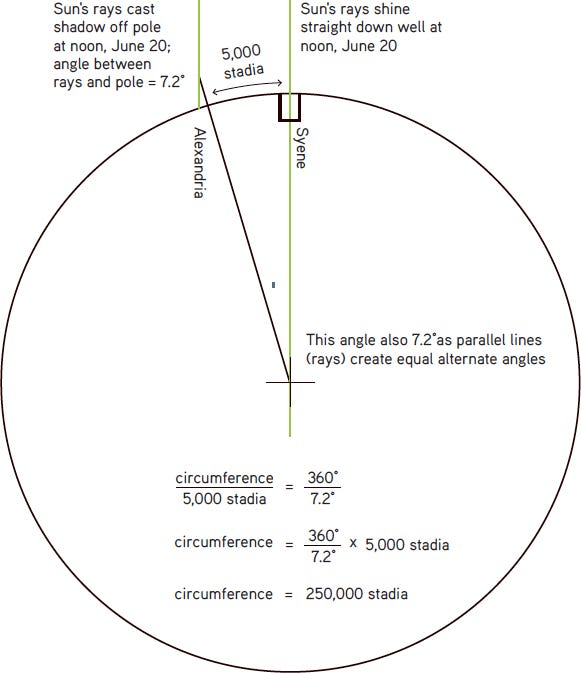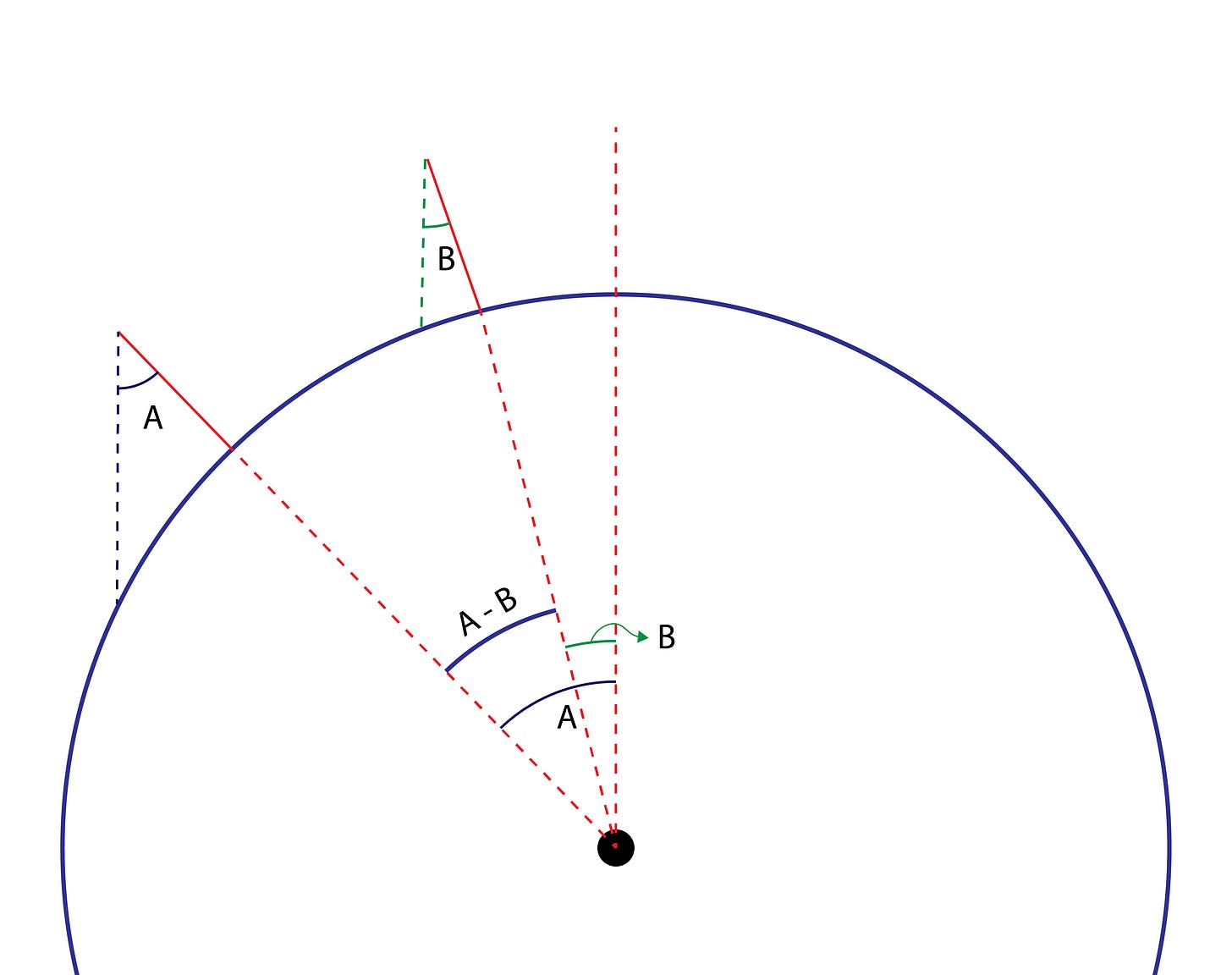Let's measure the earth's circumference!
Our new offering: The Explorer Collection
Over 2,000 years ago, Eratosthenes made a reasonable estimate of the Earth's spherical size by examining the position of the Sun's rays in two different locations.
In this article, we will delve into the complete process Eratosthenes used to measure the Earth's circumference, evaluate the accuracy of his findings, and explore how later generations of scientists refined and improved upon his pioneering work. Also, we will discuss how you can do the same measurement yourself.
Let’s begin!
Eratosthenes' Ingenious Method
Around 250 BCE, while serving as a librarian at the renowned Library of Alexandria, Eratosthenes stumbled upon an intriguing piece of information during his studies. He learned that in the town of Syene (modern-day Aswan), an annual festival took place on June 20. Curiously, only on this specific date was it feasible to look down into a well and see the sun!
This extraordinary occurrence was made possible because, on June 20, the Sun occupied a position directly above, causing its rays to descend straight into the well and then bounce back to the observer.
To measure the Earth's circumference, Eratosthenes employed the following steps:
Distance Measurement: Eratosthenes hired individuals to pace out the distance between Alexandria and Syene, determining that it was approximately 800 kilometers (500 miles). This measurement, though relatively accurate, still contained some margin of error.
Angular Measurement: On June 20, Eratosthenes erected a wooden stick in Alexandria and observed the length of the shadow it cast. He measured the angle between the stick and the shadow by dividing the length of the shadow by the length of the stick. Using an early form of simple trigonometry (we will do tan inverse) gave him an angle of ~ 7.2 degrees.
Knowing the angle between the stick and the shadow, Eratosthenes used simple geometry to deduce that the angle formed at the center of the Earth was also the same.
So, the distance between Alexandria and Syene was subtending an angle of 7.2 degrees at the center of the earth. So, how much will a 360 degree subtend will give the circumference!
Calculating the Circumference: Eratosthenes then used this proportion to determine the Earth's circumference, arriving at an estimate of approximately 39,375 kilometers (about 24,662 miles). Remarkably, this calculation was remarkably close to the Earth's actual circumference of approximately 40,075 kilometers (24,901 miles).
Eratosthenes' Accuracy and Legacy
Eratosthenes' measurement of the Earth's circumference was a monumental achievement for its time. His calculated value was accurate to within a few percentage points of the modern measurement. Considering the limited technology and resources available in the 3rd century BCE, Eratosthenes' achievement showcased his exceptional intellectual prowess.
Let’s try the same method
To use the same method, we don’t need to wait for summer solstice to get the perfect vertical Sun position. We can subtract the angles made by shadows at two different places to get the angle subtended at the center.
Choose Two Locations: Select two locations that are reasonably far apart. Ideally, they should be north-south from each other to maximize the accuracy of your measurement. If you can get another friend of yours, at this place it would be great.
Measure the Height of the Stick: Measure the height of the vertical stick accurately. Make sure to note this height. You can also use a stand-size ruler for this (and your friend). The longer the ruler, the better.
Determine Latitude: Use the internet or a weather app to find the latitude of both locations.
Calculate the Angle of Elevation: At each location, set up the stick vertically in the ground and measure the length of the shadow it casts. Calculate the angle of elevation as follows:
Angle of Elevation (in degrees) = arctan(Shadow Length / Stick Height)
Find the angle subtended: Subtract the smaller angle from the larger to get the angle subtended. Refer to the below diagram for a better understanding.
Calculate the Distance Between Locations: Calculate the distance between the two locations on the Earth's surface using the difference in latitude. Each degree of latitude is approximately 111 kilometers (69 miles). Multiply the difference in latitude by this factor to get the distance between the locations.
Estimate Earth's Circumference: To estimate the Earth's circumference, you can use the following formula:
Estimated Circumference = Distance Between Locations x 360/(A-B)
Let us know how it goes and if you face any difficulty doing the same.
We hope this article helps you to appreciate how simple ingenuity coupled with curiosity has led to continuous progress in mankind’s expansion of knowledge of the earth and beyond.




